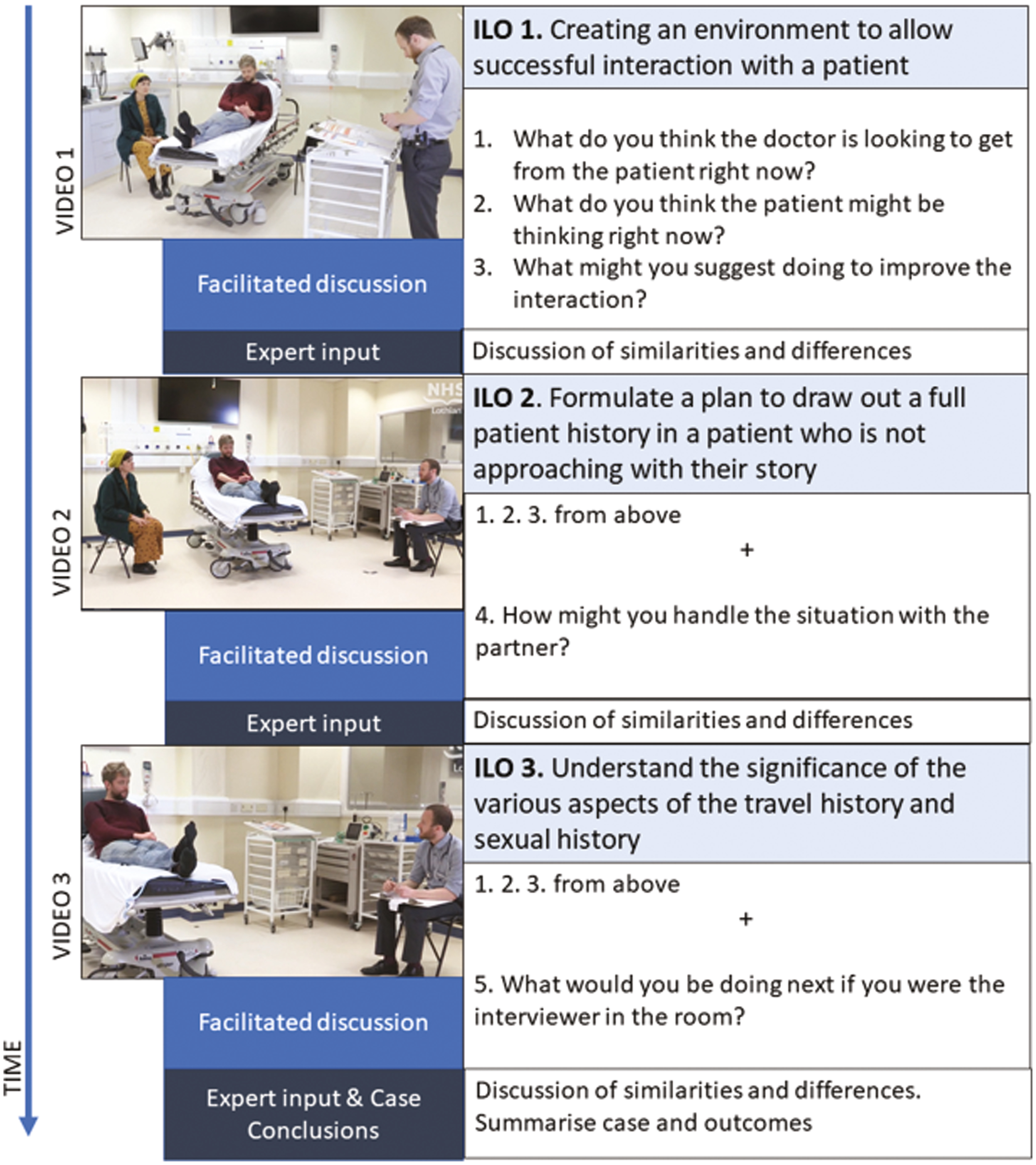
The move to online teaching and learning due to the COVID-19 pandemic has required major adjustments to usual teaching techniques. Simulation-based education (SBE) is a particular challenge to undertake in a virtual environment due to the importance of non-technical skills, made more difficult by the loss of usual social cues when communicating online. There have been a variety of innovations to provide online distance education (ODE) reported in the literature [1] including attempts to provide a traditional SBE experience [2].
Shadowbox is a video-based simulation based on cognitive transformation theory [3], which allows learners to view a scenario through the lens of a content expert [4]. This is a decision-making simulation that was originally developed to train Fire Department staff in New York State and City. This has more recently been used in nursing education to teach students about communication skills in a palliative scenario [5]. An example of a real-life challenging scenario is presented to learners with pauses at decision points for the learners to present their thoughts and suggested actions. Following these decision point discussions, the scenario continues with the expert’s actions. Following all decision points, there is a debrief involving reflection on the similarities and differences in decision-making between the learners and the experts. This technique has been shown to lead to the development of higher-level cognitive skills [4].
In April 2021, a week-long elective course on Infectious Diseases took place in Edinburgh. Due to COVID-19 restrictions, the course was entirely on a virtual platform with ODE. Taking an effective travel history and the non-technical skills aspect of this was part of the curriculum that would be ideally explored using SBE. Given the need for ODE, we devised modifications to the approach described by Harder and Turner to use Shadowbox in an ODE.
A patient scenario was designed based on an anonymized patient case the first author had reviewed. This case was chosen due to difficulties in taking a complete travel history in an unwell patient. The scenario was designed using a constructive alignment approach. Of note, the scenario design involved detailed information on a travel history provided to the simulated patient and their relative; however, no script was provided for the expert, to ensure their responses and approach/strategy were as natural as possible. Accepting that the expert was already aware of the patient history, this approach resulted in a recorded interaction that not only had some of the benefits of a live interaction in that responses were natural but also ensured that the structure of the scenario was compact and there was minimal unnecessary detail or information provided.
The scenario involved a patient who was mildly confused and reluctant to disclose detailed information on a recent travel episode due to the presence of a family member in the room. There were also various interruptions to the scenario, and the expert was distracted whilst displaying suboptimal non-technical skills. These reflected the real-life experience from this patient case. Once the scenario was designed, the simulated patient history taking was recorded and then edited by the NHS Lothian Medical Photography department.
On the day of the Shadowbox session, the learners were introduced to the concept of the session with a pre-brief. The videos were shown, and discussion took place at designed transmission points. Following the completion of the scenario, the content expert was brought in to discuss their thought processes during the scenario and reflect on the experience whilst giving feedback to the learners proposed next steps. Following this, there was a brief discussion of the differential diagnosis, management plan and eventual diagnosis and outcome. An outline of the scenario is provided in Figure 1.


Diagram of session timeline with Intended Learning Objectives and possible facilitator questions
Evaluation was performed through an online questionnaire which included Likert questions on the quality of session content and presentation style, duration of the session along with free text questions on key learning points and suggestions for improvement of the session.
During the session, the ‘Take Home Messages’ of participants included the intended learning outcomes as outlined in Figure 1. Evaluation of the session was provided by 8 of the 15 learners; 7 of the learners rated the session as ‘excellent’ quality (5/5 on Likert scale). Feedback themes included take-home messages about the importance of building rapport to ask sensitive questions. Suggestions for improvement focused on increasing the session duration to allow more discussion time.
This method of delivery of SBE through ODE has wide applicability within healthcare education settings. The use of a pre-recorded scenario eliminates most of the technical hurdles faced when delivering more traditional SBE [2]. Shadowbox as a technique has many advantages as outlined by Harder and Turner [5]. The next steps would be to undertake qualitative research on the effect of this innovation on learners’ decision-making.
We thank Dr Jenny Poller, Department of Medical Virology, NHS Lothian; Mr Joe Thomas, Simulation Technician, NHS Lothian; Ms Deppie Roumpeka, Simulation Technician, NHS Lothian; Department of Medical Photography, NHS Lothian; and Dr Ingolfur Johannessen, Department of Medical Virology, NHS Lothian, for their contribution towards this study.
NO developed the idea for the innovation. CPM developed the innovation scenario and undertook the recoding. CPM analyzed the data and wrote the initial manuscript. NO reviewed and edited the manuscript.
There was no funding provided for this innovation article.
Data sharing is not applicable to this article as no datasets were generated or analyzed during the current study.
Not applicable.
Not applicable.
The authors declare that they have no competing interests.
1.
2.
3.
4.
5.